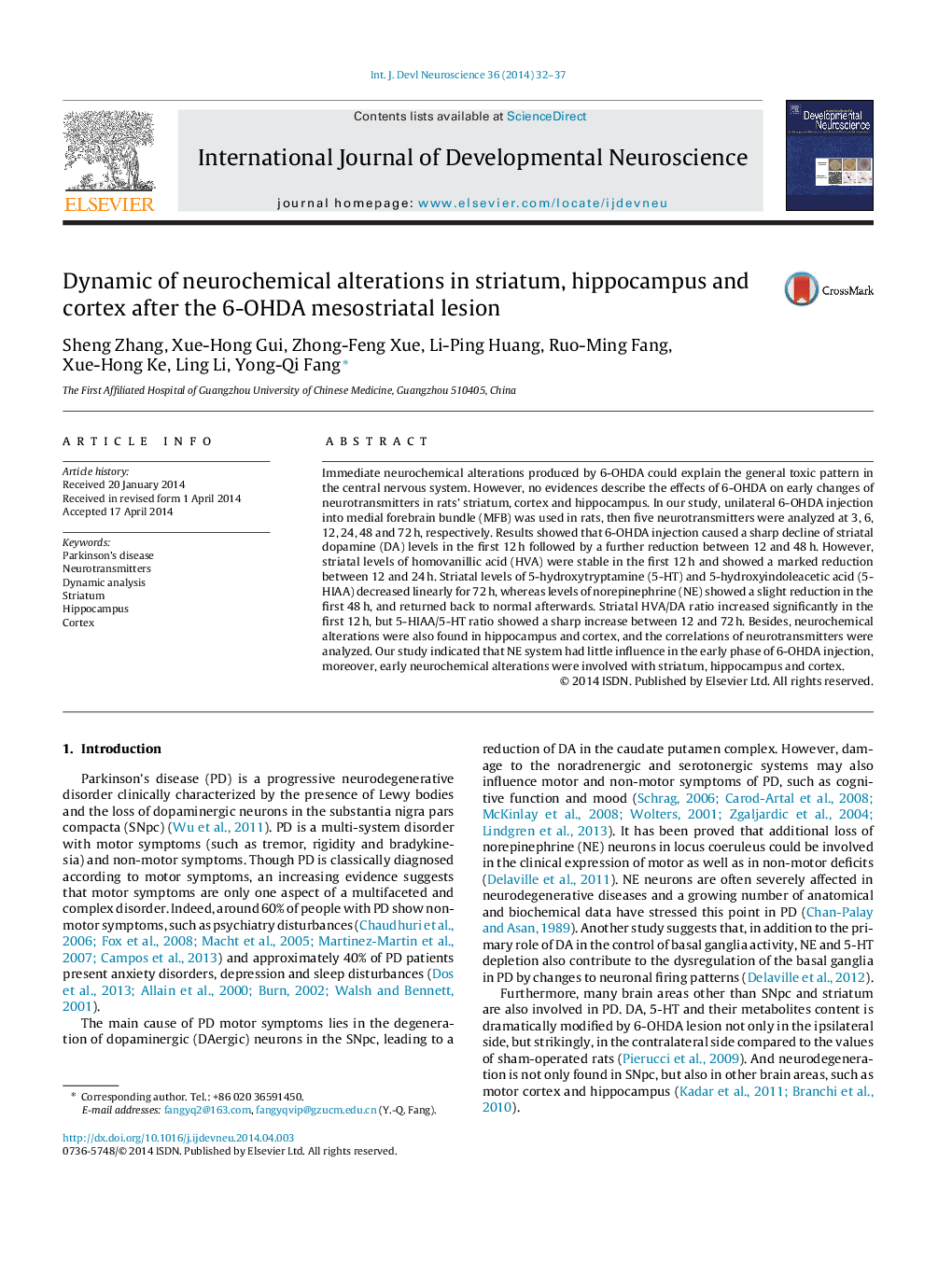| Article ID | Journal | Published Year | Pages | File Type |
|---|---|---|---|---|
| 2785905 | International Journal of Developmental Neuroscience | 2014 | 6 Pages |
•We study early changes of neurotransmitters in striatum, cortex and hippocampus.•Neurochemical alterations were analyzed at 3, 6, 12, 24, 48 and 72 h.•The dynamic ratios and correlations of neurotransmitters were analyzed.
Immediate neurochemical alterations produced by 6-OHDA could explain the general toxic pattern in the central nervous system. However, no evidences describe the effects of 6-OHDA on early changes of neurotransmitters in rats’ striatum, cortex and hippocampus. In our study, unilateral 6-OHDA injection into medial forebrain bundle (MFB) was used in rats, then five neurotransmitters were analyzed at 3, 6, 12, 24, 48 and 72 h, respectively. Results showed that 6-OHDA injection caused a sharp decline of striatal dopamine (DA) levels in the first 12 h followed by a further reduction between 12 and 48 h. However, striatal levels of homovanillic acid (HVA) were stable in the first 12 h and showed a marked reduction between 12 and 24 h. Striatal levels of 5-hydroxytryptamine (5-HT) and 5-hydroxyindoleacetic acid (5-HIAA) decreased linearly for 72 h, whereas levels of norepinephrine (NE) showed a slight reduction in the first 48 h, and returned back to normal afterwards. Striatal HVA/DA ratio increased significantly in the first 12 h, but 5-HIAA/5-HT ratio showed a sharp increase between 12 and 72 h. Besides, neurochemical alterations were also found in hippocampus and cortex, and the correlations of neurotransmitters were analyzed. Our study indicated that NE system had little influence in the early phase of 6-OHDA injection, moreover, early neurochemical alterations were involved with striatum, hippocampus and cortex.
